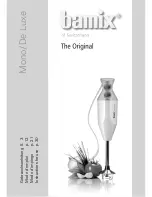
9
The filter bandwidth can also be expressed in
octaves (as on the FEEDBACK DESTROYER). The following
table shows a list of decimal Q values vs. octaves:
Octa ve
Qua lity fa ctor (Q)
1/6
8.65
1/4
5.76
1/3
4.32
1/2
2.87
3/4
1.90
1
1.41
3/2
0.92
2
0.67
3
0.40
Fig. 1.1: Octaves vs. Q factors
Now the following relationship becomes clear: the higher the Q factor, the narrower the frequency band that
can be cut or boosted. On the Behringer FEEDBACK DESTROYER you can adjust the relative bandwidth
conveniently with the infinitely variable jog wheel. The filter bandwidth can be tuned from 2 octaves (120/60
octaves) down to 1/60 octave (for fine adjustments).
1.1.1 Feedback as a physical phenomenon
Almost every concert goer may have experienced with their own ears the howling and squealing of an
improperly set sound reinforcement system. Feedback is one of the main problems encountered during live
events. A feedback loop is produced when a microphone signal is reproduced by an amplifier system, to be
picked up again (with the same phase position) by the microphone. Thus, feedback is built up at all frequencies
where the distance between microphone and speaker corresponds to a multiple of the signal’s wavelength.
Microphone
Mixing Console
Power Amp
Speaker Box
Fig. 1.3: Typical feedback loop
Basically, any microphone signal passing through an amplifier is liable to generate feedback. Unfortunately,
the feedback frequencies of P.A. systems differ, and even one single system can have varying feedback
frequencies, as these depend largely on the room acoustics. Feedback can be caused by the following
conditions:
s
The microphones are too close to the speaker boxes or the speakers are badly positioned (monitor
system).
s
The microphone channels on the mixing console are not set up correctly.
1. INTRODUCTION










































